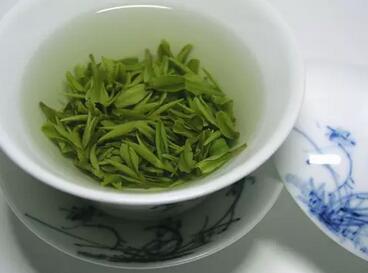Longjing tea is a famous green tea from China. Produced in Zhejiang, Longjing tea is known for its emerald green color, rich aroma, sweet and refreshing taste, and a shape resembling a sparrow's tongue. It is celebrated for its 'four wonders': green color, fragrant aroma, sweet taste, and beautiful shape. Moreover, Longjing tea contains higher levels of amino acids, catechins, vitamin C, and other components compared to other teas, making it highly nutritious and beneficial. Below, I will explain the many benefits and effects of Longjing tea.
Ingredients
Benefits of Longjing Tea
1. Promotes saliva production, quenches thirst, refreshes the mind, aids digestion, and detoxifies.
2. Antioxidant, anti-mutation, anti-tumor, lowers cholesterol and low-density lipoprotein levels in the blood, inhibits blood pressure rise, prevents platelet aggregation, antibacterial, and anti-allergic.
Effects of Longjing Tea

1. Stimulating effect:
The caffeine in tea stimulates the central nervous system, helping to refresh the mind, enhance thinking, relieve fatigue, and improve work efficiency.
2. Diuretic effect:
The caffeine and theophylline in tea have diuretic effects and can treat edema and fluid retention. The detoxifying and diuretic effects of black tea with sugar water can treat acute jaundice hepatitis.
3. Cardiotonic and antispasmodic effects:
Caffeine has cardiotonic, antispasmodic, and smooth muscle-relaxing properties, relieving bronchospasm, promoting blood circulation, and serving as a good adjunct treatment for bronchial asthma, cough, and myocardial infarction.

4. Inhibits arteriosclerosis:
The polyphenols and vitamin C in tea help prevent arteriosclerosis. Regular tea drinkers have a relatively lower incidence of hypertension and coronary heart disease.
5. Antibacterial and antimicrobial effects:
The polyphenols and tannic acid in tea act on bacteria, coagulating their proteins and killing them. It can treat intestinal diseases such as cholera, typhoid, dysentery, and enteritis. For skin sores, ulcers, or wounds, rinsing with strong tea can reduce inflammation and kill bacteria. It also helps with oral inflammation, ulcers, and sore throat.

6. Weight loss effect:
The caffeine, inositol, folic acid, pantothenic acid, and aromatic compounds in tea regulate fat metabolism, especially oolong tea, which effectively breaks down proteins and fats. Polyphenols and vitamin C lower cholesterol and blood lipids, aiding weight loss.
7. Prevents dental caries:
Tea contains fluoride, which bonds with tooth calcium to form 'fluorapatite,' a substance resistant to acid, thus protecting teeth from decay.
8. Inhibits cancer cells:
Studies report that flavonoids in tea have varying degrees of anticancer effects, with stronger compounds like vitexin, morin, and catechins. Thus, tea can inhibit cancer to some extent.

Brewing Longjing Tea
1. Middle-pour method: First, pour a small amount of hot water into the cup, add the Longjing tea leaves, then fill to 70% capacity. Alternatively, add the leaves first, then a small amount of hot water to moisten them before filling to 70%.
2. When using a lidded bowl for high-quality green tea, do not cover it immediately after pouring water. Leave it slightly open to avoid 'cooking' the leaves and affecting the flavor.
When drinking, remove tea leaves with the lid. If leaves enter the mouth, swallow them.
Steps:
1. Prepare utensils: Gather tea leaves and tea ware.
2. Warm the lidded bowl: Rinse it with boiling water.
3. Warm the lid: Rinse the lid and discard the water.
4. Add an appropriate amount of West Lake Longjing tea leaves gently into the bowl.
5. Initial steeping: Pour a small amount of 80°C water to just cover the leaves. Let them soak and expand for about 10 seconds.
6. Pour water: Fill to 70% capacity with high-poured water.
7. Brewing: Cover the bowl slightly to avoid overcooking the leaves.
8. Enjoy: The fully expanded leaves can be sipped directly from the bowl or poured into a fairness cup for sharing.
9. Smell the aroma from the lidded bowl.